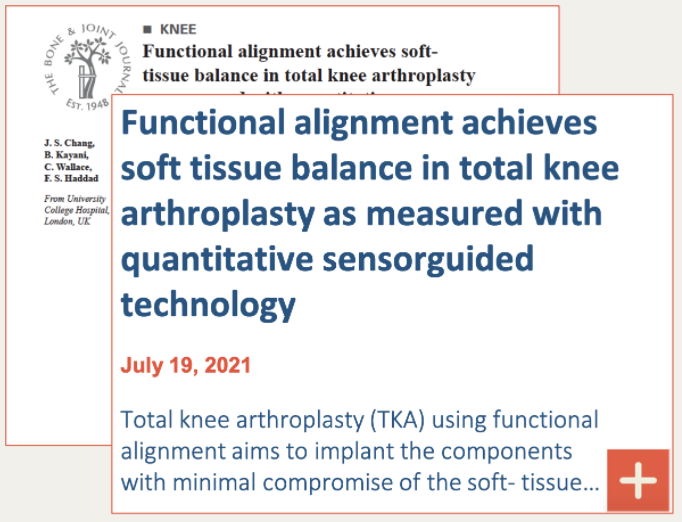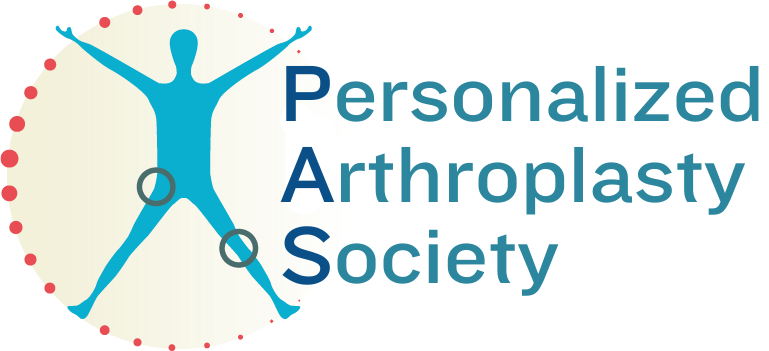PERSONALIZED TKA
Overview of Personalized Knee Arthroplasty
Personalized knee arthroplasty includes different patient specific surgical techniques, all trying to restore patient’s knee function and kinematics. Physiological implantation of Total Knee Arthroplasty components is one of the most seducing developments that ever happened in the field of knee replacement. Please find 3 review papers, describing the different surgical options.
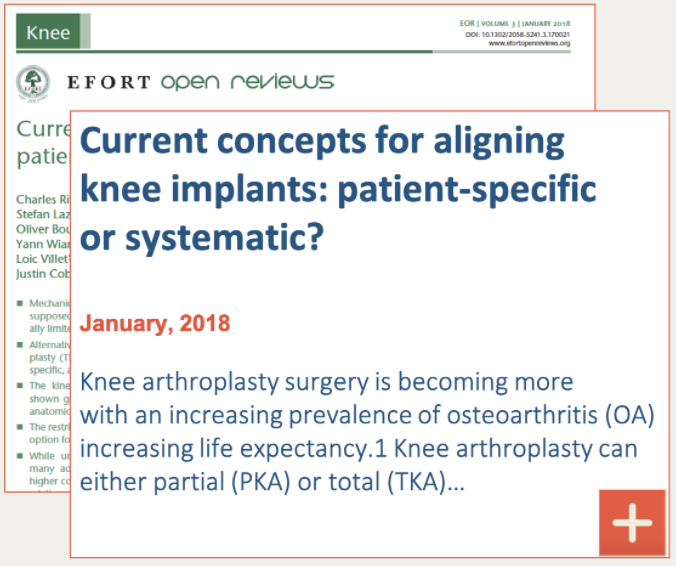
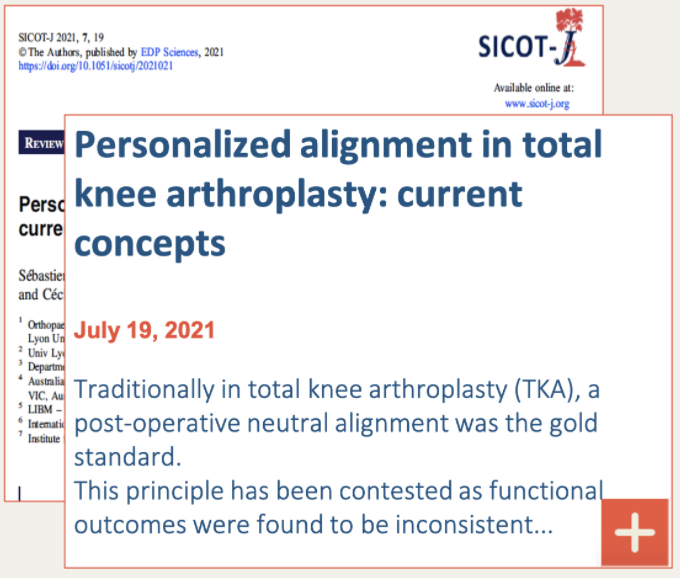
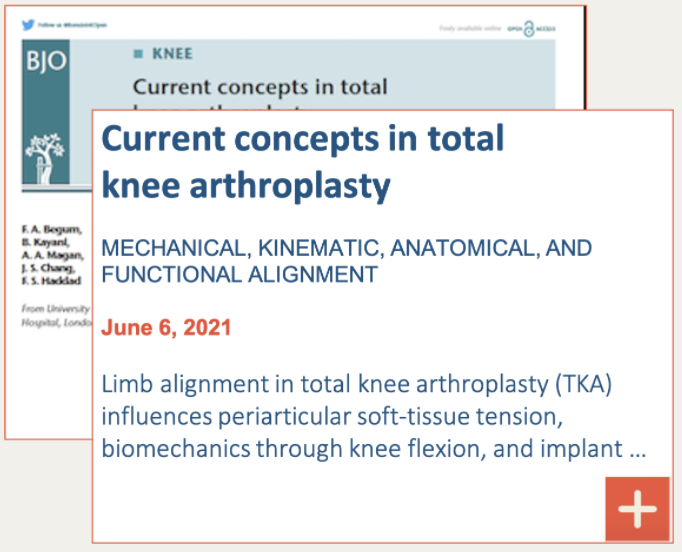

Kinematic Alignment
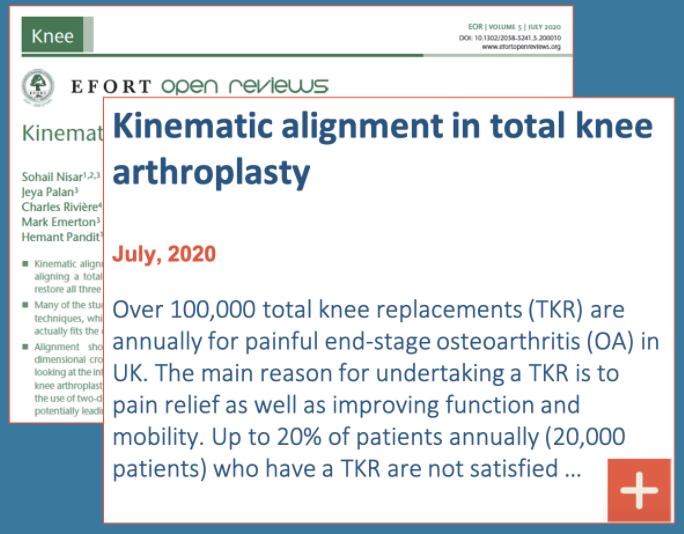
rKA
Restricted Kinematic alignment (rKA) follows the same goals as KA but reproduce the constitutional knee anatomy of the patient within a safe range. Its fundamentals are based on sound comprehension of lower limb anatomy variation. There are five principles describing rKA: (1) Combined lower limb coronal orientation should be ± 3◦ of neutral; (2) Joint line orientation coronal alignment should be within ± 5◦ of neutral; (3) Natural knee’s soft tissues tension/ laxities should be preserved/restored; (4) Femoral anatomy preservation is prioritized; (5) The unloaded/most intact knee compartment should be resurfaced and used as the pivot point when anatomical adjustment is required. An algorithm was developed to facilitate the decision-making. Pascal-André Vendittoli, started to promote the technique in 2011. This technique requires radiographic pre op planning and patient specific instruments or intra operative precision tools like surgical navigation or robotic assistance.
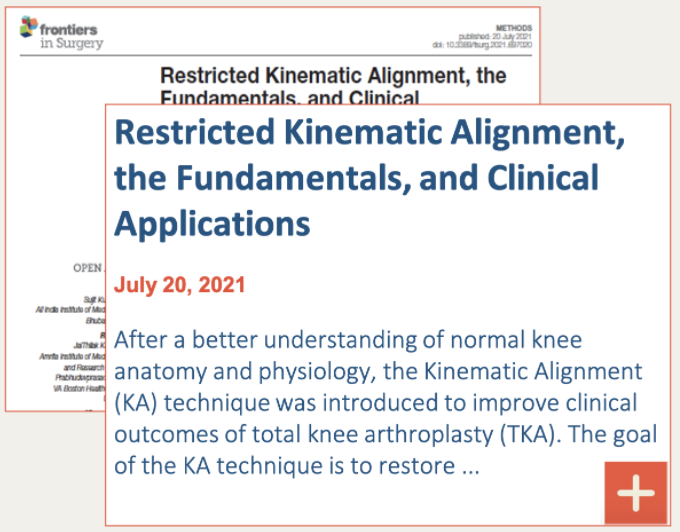
iKA
The concept of ‘inverse Kinematic Alignment’ (iKA) is a patient specific alignment strategy in which the native tibial anatomy is restored. After this patient specific, anatomical tibial cut, the rest of the procedure is a conventional ligament balancing strategy: balancing the extension and flexion gap by adapting the femoral cuts. No soft tissue releases are performed, within certain boundaries. The concept of ‘inverse Kinematic Alignment was a first at the European Knee Society in Valencia, Spain in 2019 by Philip Winnock de Grave.
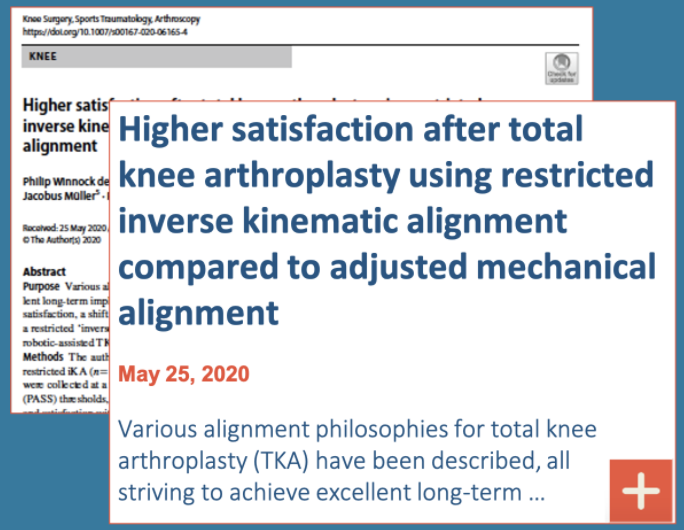
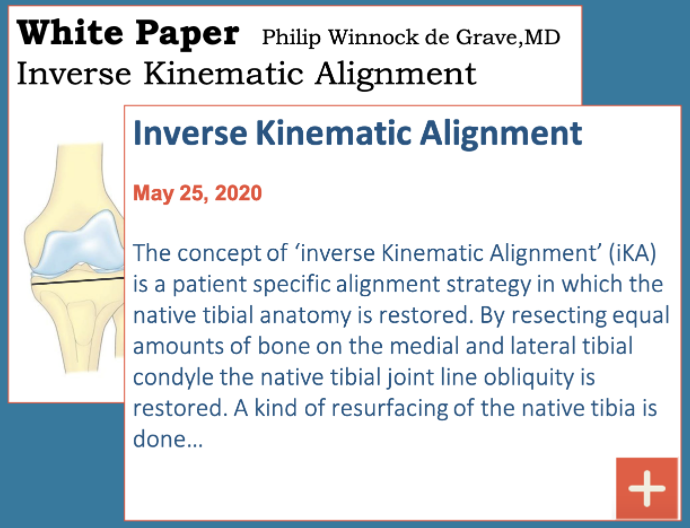
Functional Alignment
Functional alignment in TKA has been developed as a technique to restore native joint line height, obliquity, and knee kinematics by using computer-assisted technology and robotic assistance to guide bone resections and implant position. The goal is to implant the components in the position that restores the plane and obliquity of the joint and minimize any damage to the soft-tissue. Implant position is adjusted in three planes to restore the orientation and obliquity of the joint as dictated by the periarticular soft-tissue. Joint line obliquity is restored by applying valgus correction to the distal femoral resection and varus correction to the proximal tibial resection; the resulting overall limb alignment is kept within the 0° to 3° safe zone of coronal alignment.
